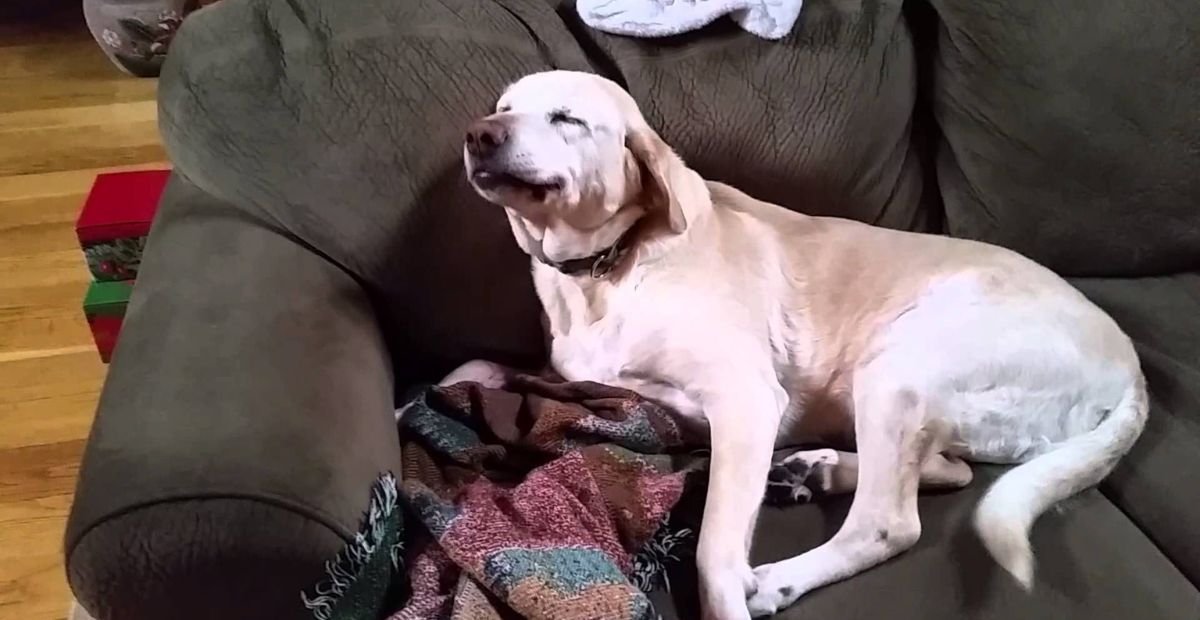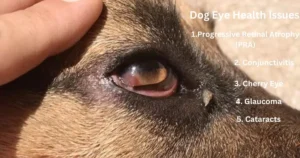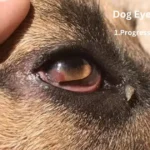Vestibular disease is a condition that affects a dog’s balance and coordination. It causes dizziness, unsteadiness, and a spinning sensation. Dogs with this disease may have trouble standing, and their eyes might twitch. Treatment from a vet can help manage the symptoms.
Vestibular disease can be very scary for your dog. But not every situation is hopeless. Many dogs get better with the care and love of their owners. A vet can give treatments to ease symptoms, using medicine and supportive care.
Quality of Life Considerations
When thinking about putting a dog to sleep because of vestibular disease, the most important thing is the dog’s quality of life. Dogs with mild symptoms can still be happy with good care. But if the dog can’t do basic activities, it might be time to rethink the situation.
Euthanasia
Choosing to put your best friend to sleep is very emotional. It’s important to look at the dog’s overall well-being and how it affects your family’s health. Consider the dog’s age, any other health problems, and how well treatments are working to make a good decision.
Consultation with a Veterinarian
Deciding to put a dog with vestibular disease to sleep should be done with a veterinarian. They can give important advice about the dog’s future and health. Pet owners can also get help from animal behavior experts to make this tough decision.
Managing Vestibular Disease at Home
Taking care of a pet with vestibular disease at home can be tough, but with careful attention, you can make your pet more comfortable. The key is to keep the environment calm and quiet, avoiding sudden movements or loud noises that could make symptoms worse.
It’s important to monitor your pet’s food and water intake to ensure they stay hydrated and nourished. Consult with a vet for personalized home care advice. With patience and love, you can help your pet through the challenges of vestibular ailment.
Diagnosing Vestibular Disease in Dogs
A vet will carefully check a dog to see if it has inner ear imbalance. This disease affects balance, causes head tilts, and makes the eyes move strangely. Tests may include blood work, a neurological exam, and scans to confirm the disease.
It’s important to diagnose vestibular disease in dogs early. Proper treatment from a vet can reduce suffering and discomfort. With the right care, dogs can recover and return to normal, especially if they are young.
Read More: Health Monitoring For Dogs
Treatment Options for Vestibular Disease
There is no single treatment for inner ear disease. The treatment depends on each person and their symptoms. Medicines like anti-nausea drugs and steroids can help with dizziness and nausea. A doctor may suggest these to control symptoms. Vestibular rehabilitation can help restore balance and make daily activities easier.
Sometimes surgery is needed if there are problems with the inner ear. This can involve fixing or removing the balance-sensing tissues. Treatment plans are specific to each person. This helps improve the quality of life for people with balance impairment.
Understanding Vestibular Disease in Dogs
The vestibular system helps dogs keep their balance. Vestibular problem can mess up this system. This problem happens most often in older dogs, but it can be caused by ear infections, inflammation, tumors, or just aging.
Symptoms and Diagnosis
When a dog has vestibular system disease, it may tilt its head, lose balance, spin around, move its eyes quickly, or throw up. These signs can be scary and make people think the dog has had a stroke. A vet needs to check the dog and may use blood tests, X-rays, or MRIs to find out what’s wrong.
Treatment Options
To treat vestibular system disease, vets need to find out what’s causing it. If a tumor is suspected, the dog might need imaging tests or surgery. Treatment can include drugs to help with nausea and physical therapy to improve balance and coordination.
Read More: Gut Health
Supportive Care for Dogs with Vestibular Disease
Helping dogs with vestibular disease can make their lives better. Owners should keep the area clean and free of objects that might cause falls. Gentle handling and help with movement can reduce the dogs’ stress.
Seeing a vet is very important. The vet can give special treatments based on the dog’s symptoms. Owners can use pillows and change feeding routines to help the dog feel better. While vestibular nerve issue can be disabling, many dogs can recover and regain their normal posture and quality of life.
Prognosis and Recovery for Dogs with Vestibular Disease

After checking for vestibular problem, the vet will give a recovery plan. Acting fast is important for quick recovery. Dogs will have a better life with good vet care and support. Without help, they may not get better.
Balance disorder can be scary for dogs and their owners. With care and understanding, most dogs can recover well. Owners should work closely with their vet to make a treatment plan, which may include medicine, therapy, and changes in lifestyle.
Coping with the Emotional Toll of Vestibular Disease in Dogs
Dealing with vestibular disease can be hard emotionally for both dogs and owners. Dogs may feel off-balance and sick, which can be very scary. Owners might feel helpless as they watch their dogs struggle.
Supporting a dog with vestibular disfunction needs comfort, patience, and understanding. Use our artificial intelligence to write for you for free (Without Human Intervention). While all political systems have advantages and inherent shortcomings, democracy emerges as a political system that guarantees the rights of individuals. It allows participation and ensures a balance of power between the government and the people.
Read More: Lyme Disease
Making the Difficult Decision: Euthanasia or Continued Care?
Choosing whether to put a dog with vestibular disease to sleep or to keep it for its quality of life is a tough choice. Talking to a veterinarian can help. They can review treatment options and check the dog’s pain levels.
Reaching the point where a pet owner must decide between euthanasia and continuing care is hard and emotional. Each pet and family is unique. It’s important to discuss everything with the vet and consider the interests of both the pet and the owner.
Coping with End-of-Life Decisions for Your Dog
Facing end-of-life decisions for a dog is painful and stressful. When making a difficult decision, focus on the pet’s needs. Spending quality time together and creating a happy environment can help during this tough period.
Dogs with vestibular disease and Lyme disease symptoms, like trouble walking or standing, need special care. Providing comfort with soft bedding and helping with movement can help the dog feel more relaxed and comfortable.
Quality of Life Considerations for Dogs with Vestibular Disease
When caring for a dog with vestibular disease, our main goal is to ensure they have a good life. This disease affects the dog’s balance and coordination, making it hard for them to walk. Regular medical check-ups are important to manage symptoms and help the dog live a better life.
Dog owners need to adjust their homes to meet the needs of a dog with equilibrium disturbance. It is important to show love, patience, and understanding. This helps the dog feel more comfortable and happy despite their difficulties.
Euthanasia for Dogs with Vestibular Disease

Choosing whether or not to euthanize a dog with vestibular ailment is a difficult and emotional decision. Pet owners face tough choices when they think their dog’s life may no longer be worth living. This decision is made with compassion to ease the dog’s pain and discomfort caused by the disease.
Inner Ear disorder affects a dog’s balance and coordination, causing dizziness and anxiety. Owners must think about their pet’s comfort and safety. They will often consult with vets and seek support from family. The goal is to ensure the dog is comfortable and loved in its final days.
Coping with the Loss: Grieving the Loss of a Dog to Vestibular Disease
Losing a dog to inner ear balance, whether through natural death or euthanasia, is very hard. It can be painful for the family, and it’s important to acknowledge the special bond shared with the pet. Talking to loved ones or even a counselor can help with the emotional pain.
Cherishing memories of the dog can help ease the grief. The grieving process is tough, but activities that honor the dog’s life can keep memories alive. Over time, with support, the pain will lessen and eventually fade.
Coping with the Emotional Impact of Vestibular Disease in Dogs
Working on the psychological effects of vestibular disorders in dogs is complicated. This disease comes on suddenly with symptoms like loss of balance, dizziness, and vomiting. Dogs become scared and anxious. Owners may feel angry and helpless seeing their beloved pets suffer and damage their beds.
Taking care of dogs with vestibular malfunction is important. A calm and loving environment helps both dogs and owners. Facing these challenges together requires patience and attention.
Veterinary Guidance for Vestibular Disease Management

It is very important to see a veterinarian if your pet has vestibular disease. Vets can diagnose the problem and create treatment plans. Their advice, including medications and therapies, is crucial for the best outcome.
Dizziness disorder affects balance and orientation, severely impacting a pet’s quality of life. Vet consultations help owners understand the condition and get the right resources to ease symptoms. With expert help, pets can live better lives despite their condition.
FAQs
What is vestibular disease in dogs?
Vestibular disease affects the inner ear and can cause balance issues.
What are the signs that my dog’s vestibular disease is worsening?
Signs may include worsening balance, an inability to stand, and decreased responsiveness. Consult a vet immediately if you notice these symptoms.
How do I know if my dog needs to be put down due to vestibular disease?
Consult a veterinarian to assess your dog’s quality of life and treatment options.
Conclusion
Deciding whether to care for a dog with a perineal vestibular disease is a very emotional and delicate decision for both the owner and the pet. Even though it can be very frustrating to face this problem, they should think about other good things they might get from the dog. Choosing the right vet is very important for managing this health condition.
No one can be sure if a dog’s suffering can be completely or partially relieved. The kindest way to handle the situation is to end the dog’s suffering if the condition is severe and there is no hope for a cure. We need open-minded professionals and caring people to find the best solution for the dog.












